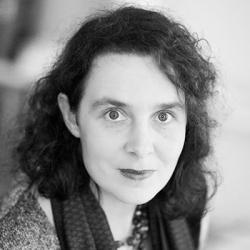Contemporary History in the Art of the FRG and GDR in the Early 1960s
Workshop
Contemporary History in the Art of the FRG and GDR in the Early 1960s
This workshop included lectures by Eckhart Gillen and Ulrich Baehr as well as a reading workshop.
Conferences
Eckhart Gillen
“The Two Germanys Facing the Past and Reality: Against the loss of interest in history behind the walls of utopia and the subversive power of Memory”
After 1945, the plan for a radical new departure, the “Renaissance” of a “New Germany” in the zone occupied by the Soviet Union (the future GDR), did not tolerate delays, interruptions or melancholy. It was only in the 1960s that the two Germanys and their artists slowly reconnected with reality and turned their backs on the idealism of the post-war period. Fifteen years after the end of World War II, the Eichmann trial in Jerusalem and the Auschwitz trials from 1963 to1965 had a sobering effect on people and helped to dispel illusions; the past appeared to be catching up with West Germans. Reports from these trials delivered a brutal reality check to this affluent society. It is against this backdrop that Gerhard Richter addressed a theme that had become taboo, in a manner which appeared discreet on the surface, but whose effect was all the more lasting: the idea that Murderers are Among Us (the title of a film by Wolfgang Staudte from 1946). Also at this time, in East Germany, artists born between 1920 and 1930 who had lived through the war imposed a new form of realism, debunking the idealism of the dogmatic polarisation between abstraction and realism. In this way, Bernhard Heisig drew on his own experience as a member of the Waffen-SS in his Festung Breslau (Breslau Fortress). In his artworks, the deciphering aspect of art-historical work is adapted to accommodate disparate elements, ranging from nightmares and intangible fragments of memories to tangible objects and photographs. How was this return of history expressed in the art of the FRG and the GDR in the 1960s? What means did artists utilise to represent the present relevance of the past? These questions will be addressed through a study of the works of Gerhard Richter and Bernhard Heisig, as well as those of Werner Tübke and Willi Sitte, the SPUR group in Munich, the Situationist International, the Pandemonium Manifesto in West Berlin (Georg Baselitz and Eugen Schönebeck), Ulrich Baehr, Markus Lüpertz and the early work of Anselm Kiefer, such as Besetzungen (Occupations) from 1969.
Ulrich Baehr
“A Reappraisal of the Historienbilder”
The experience of the “Years of Lead” in Germany under Adenauer played a decisive role for Ulrich Baehr in the genesis of his Historienbilder and Deutsche Torsi, which he created between 1964 and 1976. This was a period in which his strong interest in the recent past inevitably cast him as an outsider. In 1964, coinciding with the emergence of student protest movements, a small group of young art graduates from the Art School rented a space in a Berlin factory to create Germany's first self-run art gallery, baptised “Großgörschen 35”. Ulrich Baehr was a member of this group, whose participants aimed to free themselves from the doctrine of international abstraction by developing alternative fields of exploration, focusing on subjects such as the reality of big cities (Karl Horst Hödicke), “Sex and Crime” (Peter Sorge), the daily life of the lower middle-class (Wolfgang Petrick), the pathos and over-enthusiasm of the protest act (Markus Lüpertz) and Germany's recent history (Ulrich Baehr). In preparation for his Historienbilder and Deutsche Torsi, Baehr began to amass a vast collection of documents, images and press cuttings relating to historical events that had become integrated into collective memory (such as the Reich Convention and the Yalta Conference). The concept of a “corporal language of power” also played a central role in his artistic process. Using this source material and numerous preparatory studies, he developed a substantial iconographic and formal work programme that notably included the use of fragmented figures. Dramatic compositions of the image (making use of physiognomy, body language and an oblong format) can also be interpreted as an ironic allusion to the classical nineteenth century historical painting genre (Adolph Menzel, Anton von Werner), which Baehr had studied at Berlin art museums. In this lecture, Ulrich Baehr will present his work, referring back to this formative period as well as his artistic and theoretical sources of inspiration.
Reading workshop
Conceived by Clara Pacquet. The text by J.-F. Lyotard was introduced by Julie Sissia, the text by J. W. Winnicott by Aneta Panek and Maria Bremer has the text «Une démocratique de l'art de Marcel Duchamp à Joseph Beuys?» By J.-P. Antoine presents.
- Sigmund Freud, “Jenseits des Lustprinzips (1920)”, in id., Gesammelte Werke, t. 13, Anna Freud (ed.), London, 1940, translation by Samuel Jankélévitch, Paris, 1968
- J. W. Winnicott, “La crainte de l'effondrement”, in id., La crainte de l'effondrement et autres situations cliniques, Paris, Payot, 2000, p. 205-216
- Jean-François Lyotard, “Le non et la position de l'objet,” in id., Discours, figure, Paris, Klincksieck, 1971, p. 117-129
- Jean-Philippe Antoine, Pe“indre le nom du souvenir: les images de l'art de la mémoire”, “Une expérience démocratique de l'art de Marcel Duchamp à Joseph Beuys?”, “'Je ne travaille pas avec des symboles'. Joseph Beuys, l'expérience et la construction du Souvenir”, in id., Six rhapsodies froides sur le lieu, l'image et le souvenir, Paris, Desclée de Brouwer, 2002, p. 19-52, p. 101-142, p. 145-198




